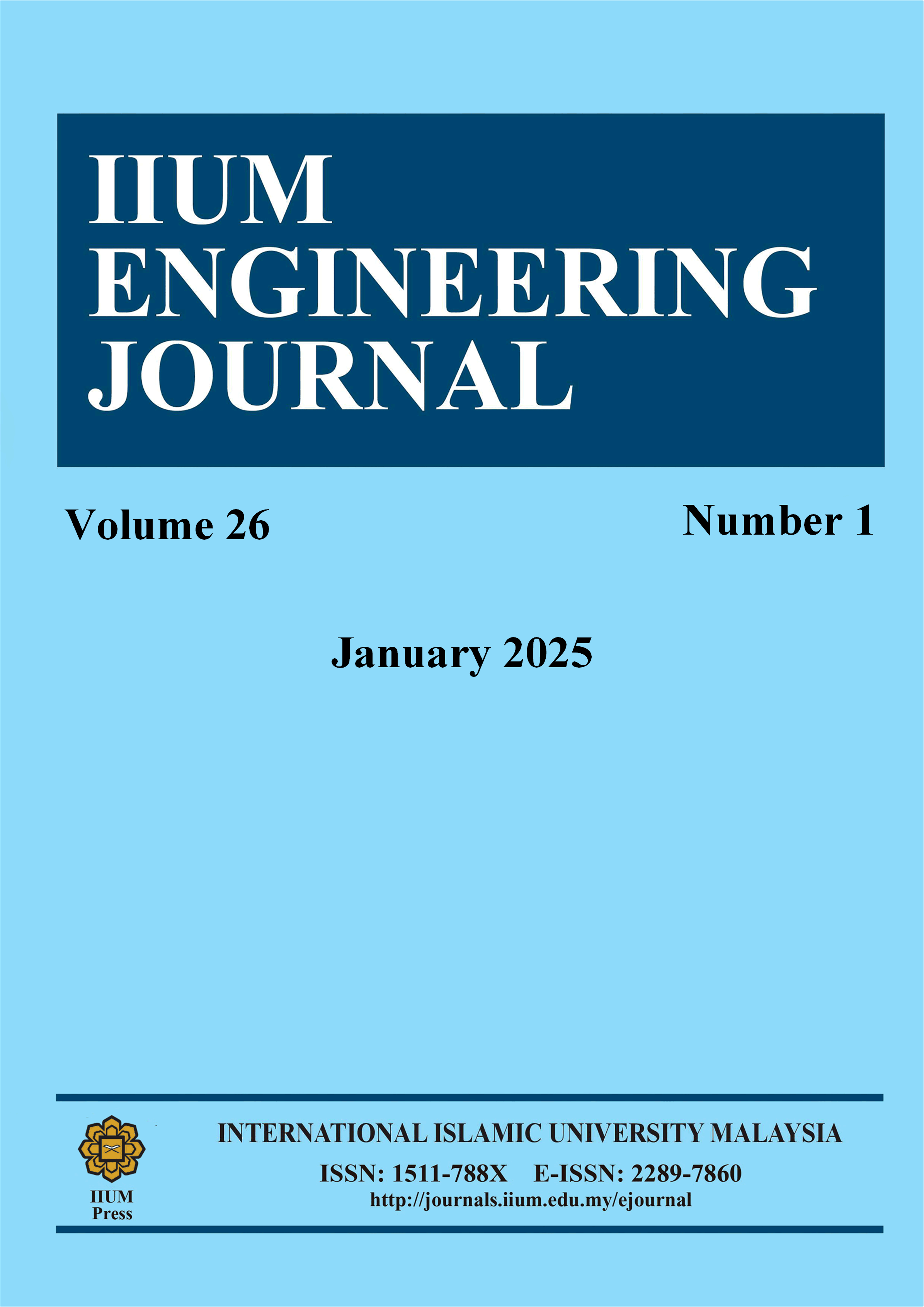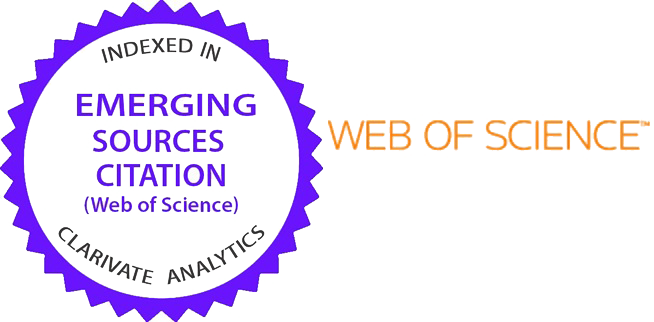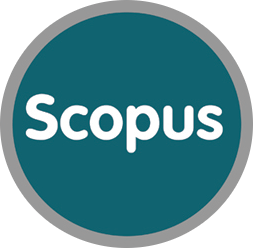Fuzzy Logic-Based Arrival Time Estimation for Indoor Navigation Using Augmented Reality
DOI:
https://doi.org/10.31436/iiumej.v26i1.3189Keywords:
Indoor Navigation, Path Planning, Estimated Time Arrival, Fuzzy LogicAbstract
In recent years, Augmented Reality (AR) has gained popularity in various industries due to its ability to enhance efficiency, provide real-time information and data, and maintain user awareness of their surroundings. One of the applications of AR is in navigation, but most existing systems primarily focus on outdoor environments, neglecting indoor spaces. Mobile applications designed for indoor navigation often rely on expensive and computationally demanding beacons or natural markers to track the user's location along a predetermined path. Furthermore, traditional navigation estimation methods based on GPS are ineffective for indoor navigation. This study proposes a mobile AR application for indoor navigation that uses an intelligent signage algorithm based on fuzzy logic to estimate arrival time. The algorithm takes phone acceleration in the x and z directions as inputs and employs triangular-shaped membership functions for input and output variables. The experimental results indicate the feasibility of using fuzzy logic to estimate arrival time for indoor navigation, with an average prediction error of 5.82%.
ABSTRAK: Beberapa tahun ini, Realiti Terimbuh (AR) telah menjadi popular dalam pelbagai industri kerana keupayaannya meningkatkan kecekapan, menyediakan maklumat dan data secara masa nyata, dan mengekalkan kesedaran pengguna terhadap persekitaran sekeliling. Salah satu aplikasi AR adalah dalam navigasi, tetapi kebanyakan sistem sedia ada lebih menumpukan kepada persekitaran luar, mengabaikan ruang dalaman. Aplikasi mudah alih yang direka untuk navigasi dalaman sering bergantung pada bekon mahal dan memerlukan komputasi tinggi atau penanda semula jadi bagi menjejaki lokasi pengguna sepanjang laluan yang ditetapkan. Selain itu, kaedah anggaran navigasi tradisional berdasarkan GPS tidak berkesan bagi navigasi dalaman. Kajian ini mencadangkan aplikasi AR mudah alih bagi navigasi dalaman yang menggunakan algoritma papan tanda pintar berdasarkan logik kabur bagi menganggarkan masa ketibaan. Algoritma ini mengambil pecutan telefon dalam arah x dan z sebagai input dan menggunakan fungsi keahlian berbentuk segi tiga bagi pemboleh ubah masuk dan keluar. Dapatan eksperimen menunjukkan kebolehan menggunakan logik kabur bagi menganggarkan masa ketibaan bagi navigasi dalaman, dengan kesilapan anggaran purata sebanyak 5.82%.
Downloads
Metrics
References
Fire and Rescue Department. (2020). Statistics On Fire Breakouts, Statistics On Fire Breakouts, Malaysia - Dataset - MAMPU. Department of Statistics Malaysia. Retrieved from https://www.data.gov.my/data/en_US/dataset/statistics-on-fire-breakouts-malaysia .
Bahamid, A., Ibrahim, A. M., Ibrahim, A., Zahurin, I. Z., & Wahid, A. N. (2020, December). Intelligent robot-assisted evacuation: A review. In Journal of Physics: Conference Series (Vol. 1706, No. 1, p. 012159). IOP Publishing. DOI: https://doi.org/10.1088/1742-6596/1706/1/012159
Abir, I. M., Ibrahim, A. M., Toha, S. F., & Shafie, A. A. (2022). A review on the hospital evacuation simulation models. International Journal of Disaster Risk Reduction, 103083 DOI: https://doi.org/10.1016/j.ijdrr.2022.103083
Ibrahim, A. M., Saifullah, M., Romlay, M. R. M., Venkat, I., & Ibrahim, I. (2019, October). Hybrid Social Force-Fuzzy Logic Evacuation Simulation Model For Multiple Exits. In 2019 7th International Conference on Mechatronics Engineering (ICOM) (pp. 1-5). IEEE DOI: https://doi.org/10.1109/ICOM47790.2019.8952063
Craig, A. B. (2013). Understanding augmented reality: Concepts and applications. DOI: https://doi.org/10.1016/B978-0-240-82408-6.00002-3
De Oliveira, L. C., Andrade, A. O., De Oliveira, E. C., Soares, A., Cardoso, A., & Lamounier, E. (2017). Indoor navigation with mobile augmented reality and beacon technology for wheelchair users. 2017 IEEE EMBS International Conference on Biomedical and Health Informatics, BHI 2017, 37–40. https://doi.org/10.1109/BHI.2017.7897199 DOI: https://doi.org/10.1109/BHI.2017.7897199
Huang, B. C., Hsu, J., Chu, E. T. H., & Wu, H. M. (2020). Arbin: Augmented reality-based indoor navigation system. Sensors (Switzerland), 20(20), 1–20. https://doi.org/10.3390/s20205890 DOI: https://doi.org/10.3390/s20205890
Matuszka, T., Gombos, G., & Kiss, A. (2013). A new approach for indoor navigation using semantic web technologies and augmented reality. Lecture Notes in Computer Science (Including Subseries Lecture Notes in Artificial Intelligence and Lecture Notes in Bioinformatics), 8021 LNCS(PART 1), 202–210. https://doi.org/10.1007/978-3-642-39405-8_24 DOI: https://doi.org/10.1007/978-3-642-39405-8_24
Lo Valvo, A., Croce, D., Garlisi, D., Giuliano, F., Giarré, L., & Tinnirello, I. (2021). A Navigation and Augmented Reality System for Visually Impaired People. Sensors (Basel, Switzerland), 21(9), 1–15. https://doi.org/10.3390/s21093061 DOI: https://doi.org/10.3390/s21093061
Md Noor, R., Seong Yik, N., Kolandaisamy, R., Ahmedy, I., Hossain, M. A., Lim, K.-, Yau, A., Shah, W. M., & Nandy, T. (2020). Predict Arrival Time By Using Machine Learning Algorithm To Promote Utilization of Urban Smart Bus. February. https://doi.org/10.20944/preprints202002.0197.v1 DOI: https://doi.org/10.20944/preprints202002.0197.v1
Liu, Z., Chen, L., Zhou, X., Jiao, Z., Guo, G., & Chen, R. (2023). Machine Learning for Time-of-Arrival Estimation with 5G Signals in Indoor Positioning. 14(8). https://doi.org/10.1109/JIOT.2023.3234123 DOI: https://doi.org/10.1109/JIOT.2023.3234123
Bhorkar, G. (2017). A Survey of Augmented Reality Navigation. Retrieved from http://arxiv.org/abs/1708.05006
Koch, C., Neges, M., König, M., & Abramovici, M. (2014). Natural markers for augmented reality-based indoor navigation and facility maintenance. Automation in Construction, 48, 18–30. https://doi.org/10.1016/j.autcon.2014.08.009 DOI: https://doi.org/10.1016/j.autcon.2014.08.009
Romlay, M. R. M., Rashid, M. M., Toha, S. F., & Ibrahim, A. M. (2019). Rainfall-Runoff Model Based on ANN with LM, BR and PSO as Learning Algorithms. International Journal of Recent Technology and Engineering (IJRTE), 8(3), 971-979. DOI: https://doi.org/10.35940/ijrte.C4115.098319
Downloads
Published
How to Cite
Issue
Section
License
Copyright (c) 2024 IIUM Press

This work is licensed under a Creative Commons Attribution-NonCommercial 4.0 International License.






















